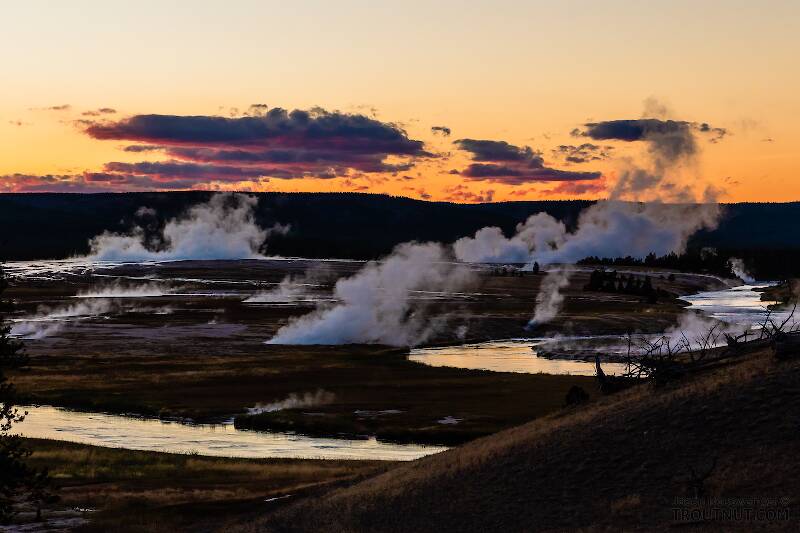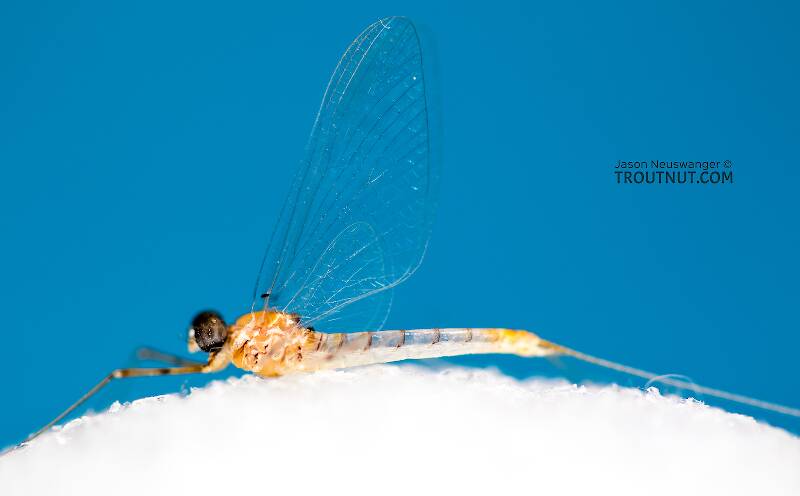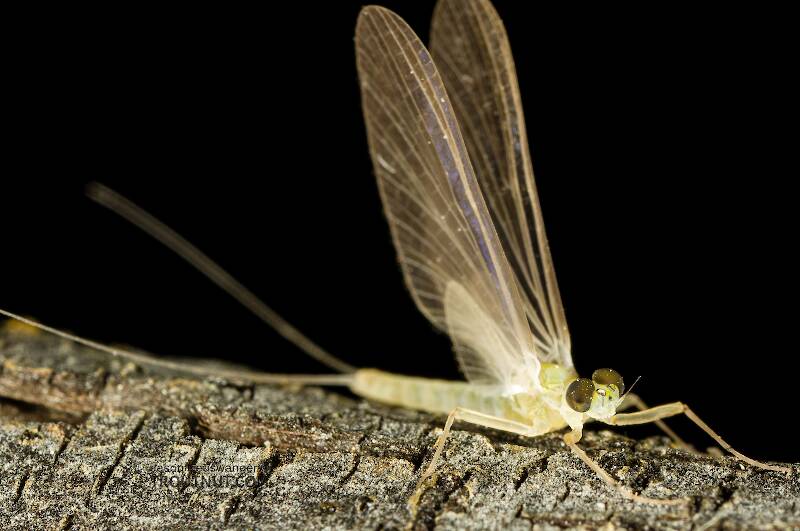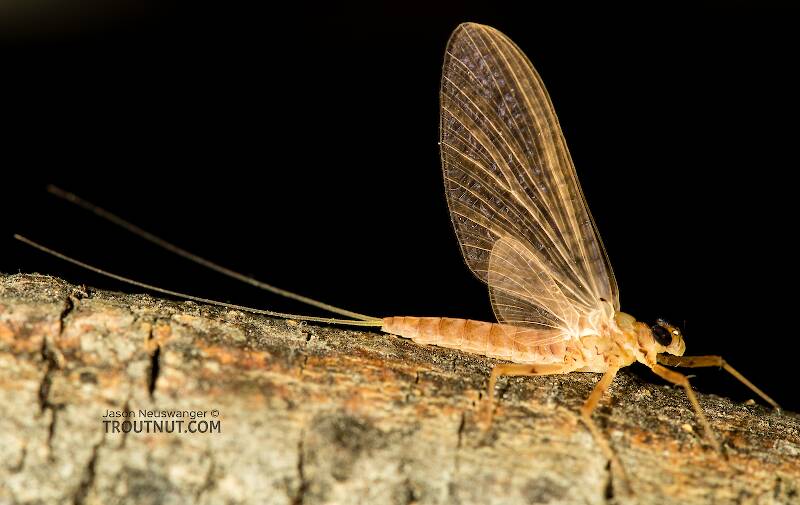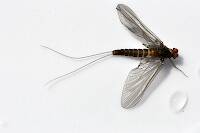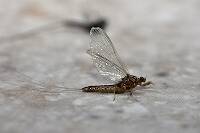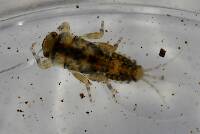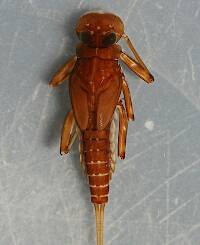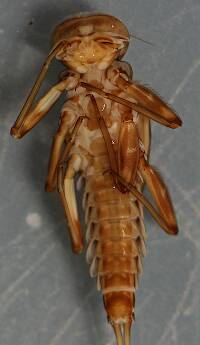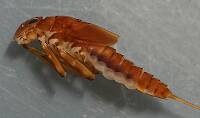
Salmonflies
Pteronarcys californica
The giant Salmonflies of the Western mountains are legendary for their proclivity to elicit consistent dry-fly action and ferocious strikes.
Featured on the forum

Troutnut is a project started in 2003 by salmonid ecologist Jason "Troutnut" Neuswanger to help anglers and
fly tyers unabashedly embrace the entomological side of the sport. Learn more about Troutnut or
support the project for an enhanced experience here.
This topic is about the Mayfly Genus Epeorus
There is remarkable variety of form and color within this prolific genus of fast-water mayflies. Different species are found across the country, and several cause good hatches. Fly anglers are likely to encounter the lesser species on occasion, too.The best Epeorus hatch in the East is Epeorus pleuralis, the famous Quill Gordon, the first abundant large mayfly hatch of the year. Epeorus vitreus comes a little later and is important in both the East and Midwest.
In the West, Epeorus longimanus dominates in fast, high-altitude streams, while Epeorus albertae inhabits slower and lower waters.
Example specimens
Troutnut on May 3, 2007May 3rd, 2007, 6:39 am EDT
There has been some discussion here before about Epeorus identification, especially the distance between the eyes of the adult males, which is one identifying characteristic. The keys say that the distance should be "less than the width of the median ocellus," but I have collected a few male duns that didn't quite fit that requirement.
We figured they were Epeorus anyway, so it's not a big deal, but a new specimen I collected sheds a bit of light on the question.
I collected a dun whose eyes were also a bit far apart, which you can see here:
http://www.troutnut.com/specimen/681
Then it molted into a spinner:
http://www.troutnut.com/specimen/682
The spinner's eyes were really almost touching, well within the description of the genus. So that answers our question: the duns may have a little wider spread and the gap will close up in the spinners.
We figured they were Epeorus anyway, so it's not a big deal, but a new specimen I collected sheds a bit of light on the question.
I collected a dun whose eyes were also a bit far apart, which you can see here:
http://www.troutnut.com/specimen/681
Then it molted into a spinner:
http://www.troutnut.com/specimen/682
The spinner's eyes were really almost touching, well within the description of the genus. So that answers our question: the duns may have a little wider spread and the gap will close up in the spinners.
Jason Neuswanger, Ph.D.
Troutnut and salmonid ecologist
Troutnut and salmonid ecologist
Quick Reply
Related Discussions
Topic
Replies
Last Reply
4
Feb 1, 2009
by Taxon
by Taxon
1
Oct 28, 2008
by GONZO
by GONZO
Re: if bass and carp are o.k., what about tarpon and permit? Featured Topic
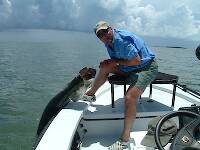
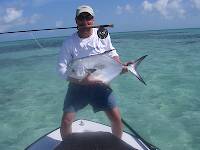
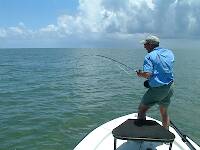
In the Photography Board by Gutcutter



In the Photography Board by Gutcutter
4
Feb 24, 2010
by Gutcutter
by Gutcutter
7
May 9, 2012
by Entoman
by Entoman
8
Jun 5, 2007
by Dinerobyn
by Dinerobyn

